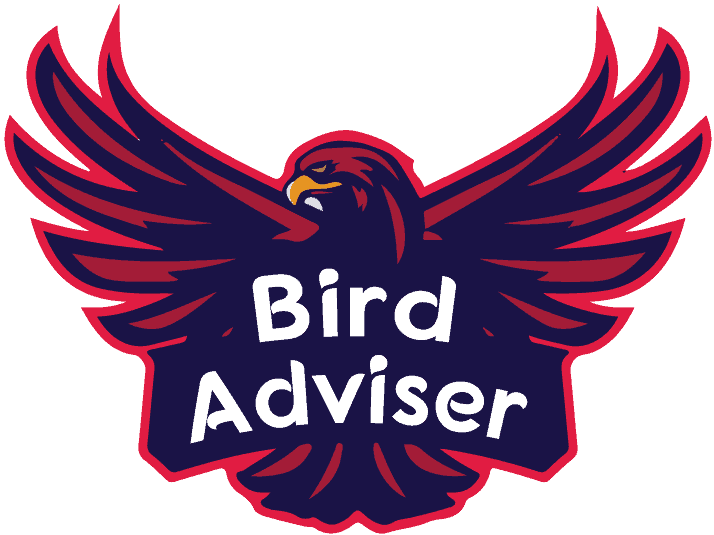Hi there! In this article, I’ll be introducing you to 10 different types of ducks that can be found in Texas.
Texas is a popular destination for waterfowl hunters and birdwatchers alike, thanks to its vast wetlands and diverse range of habitats.
From the iconic Mallard to the elusive Wood Duck, these ducks come in a variety of shapes, sizes, and colors, making them a fascinating subject of study for anyone interested in the natural world.
So, whether you’re an avid birder or just starting out, join me as we explore the fascinating world of Texas’s ducks.
| Image | Name |
|---|---|
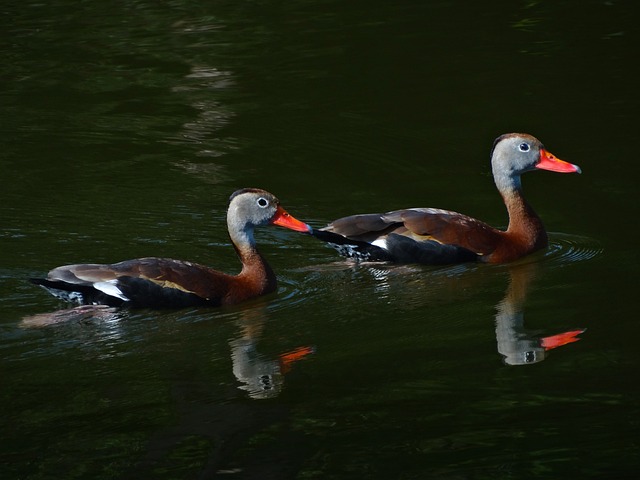 | Black-Bellied Whistling Duck |
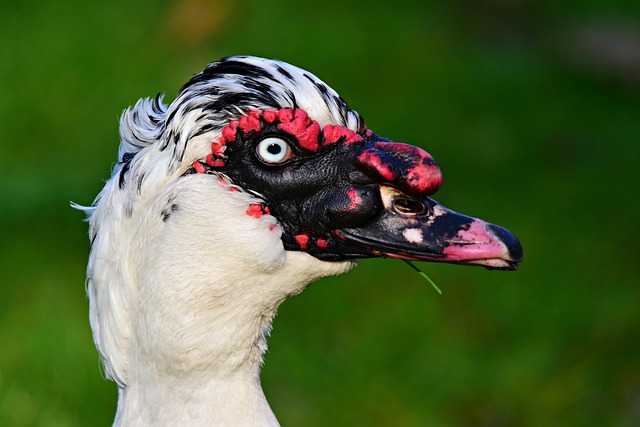 | Muscovy Duck |
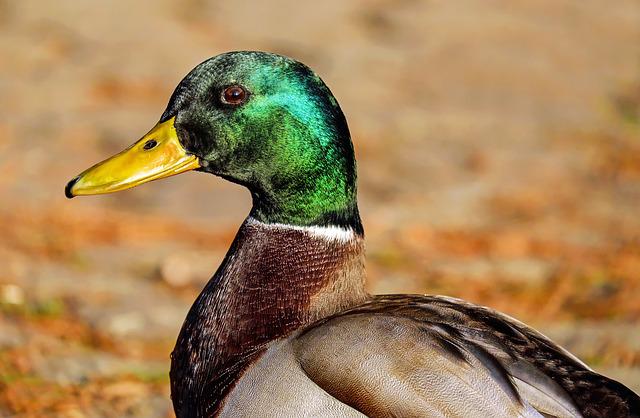 | Mallard Duck |
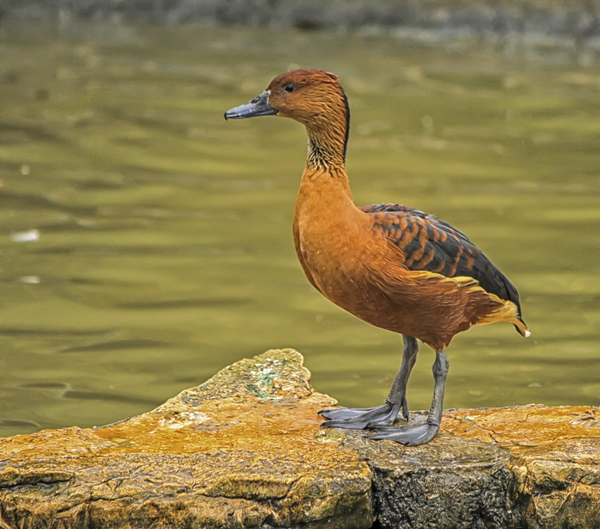 | Fulvous Whistling duck |
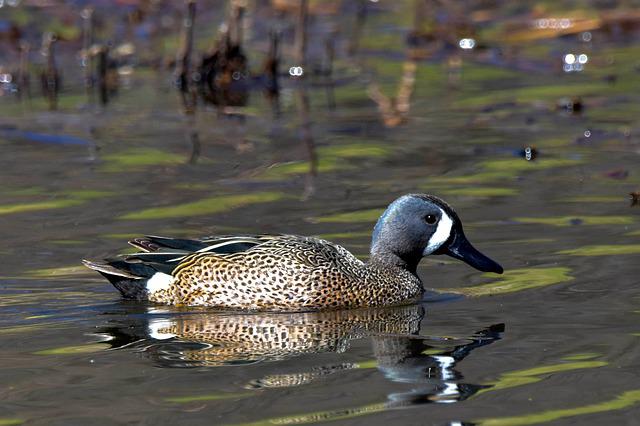 | Blue Winged Teal |
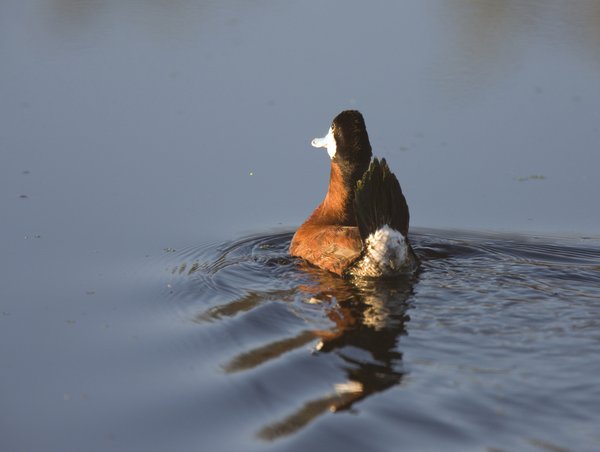 | Ruddy Duck |
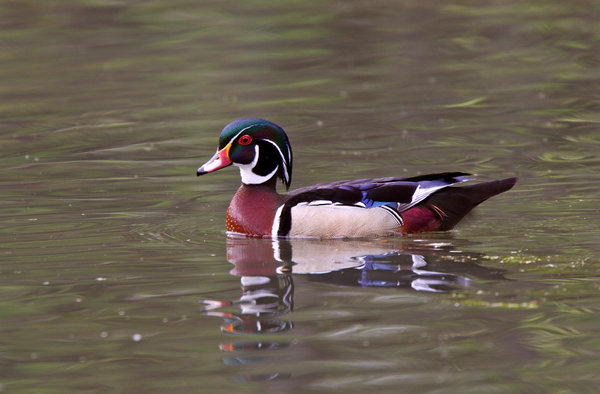 | Wood Duck |
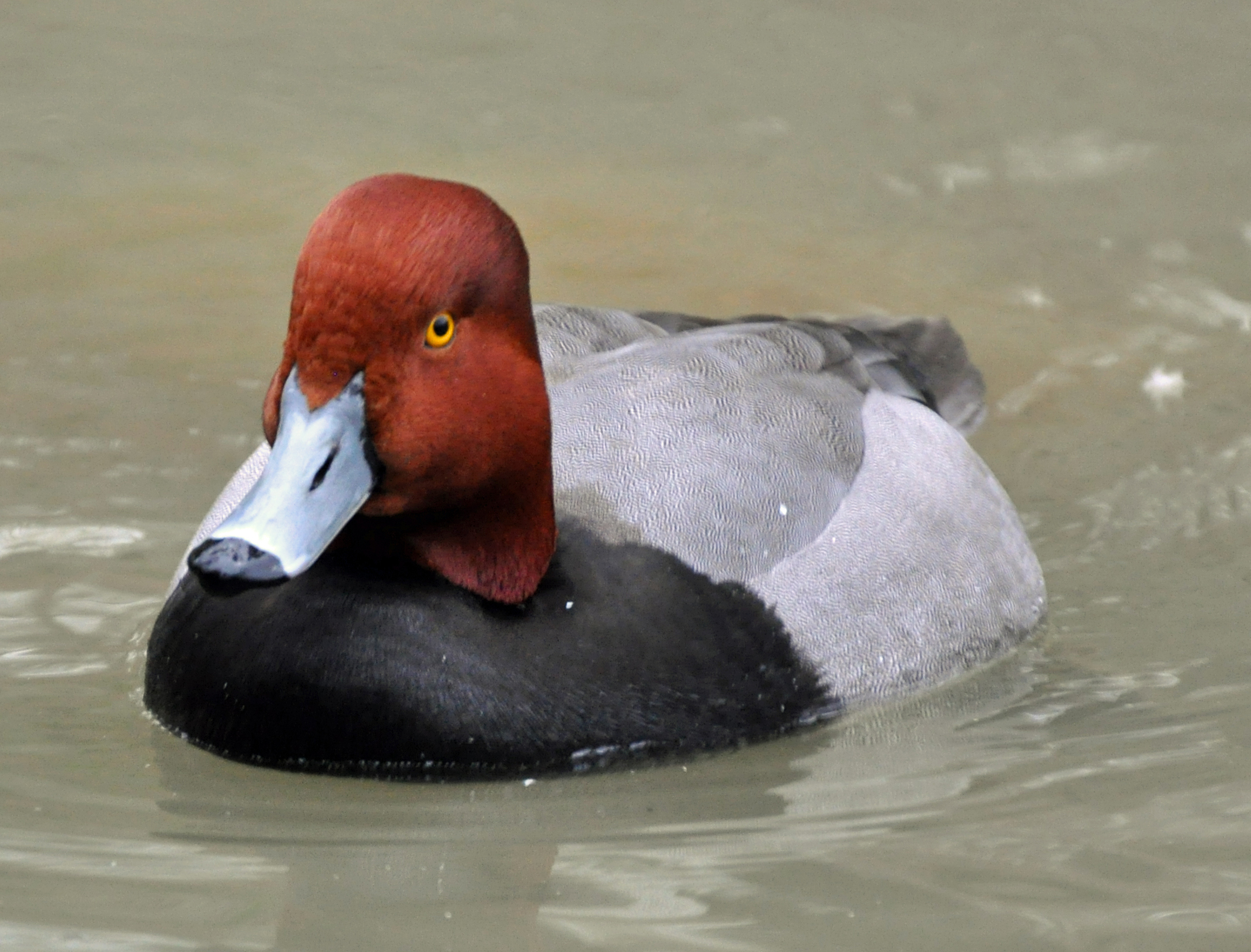 | Redhead Mallard |
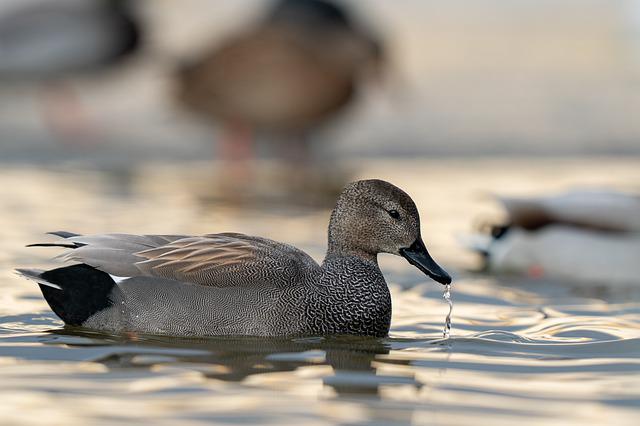 | Gadwall |
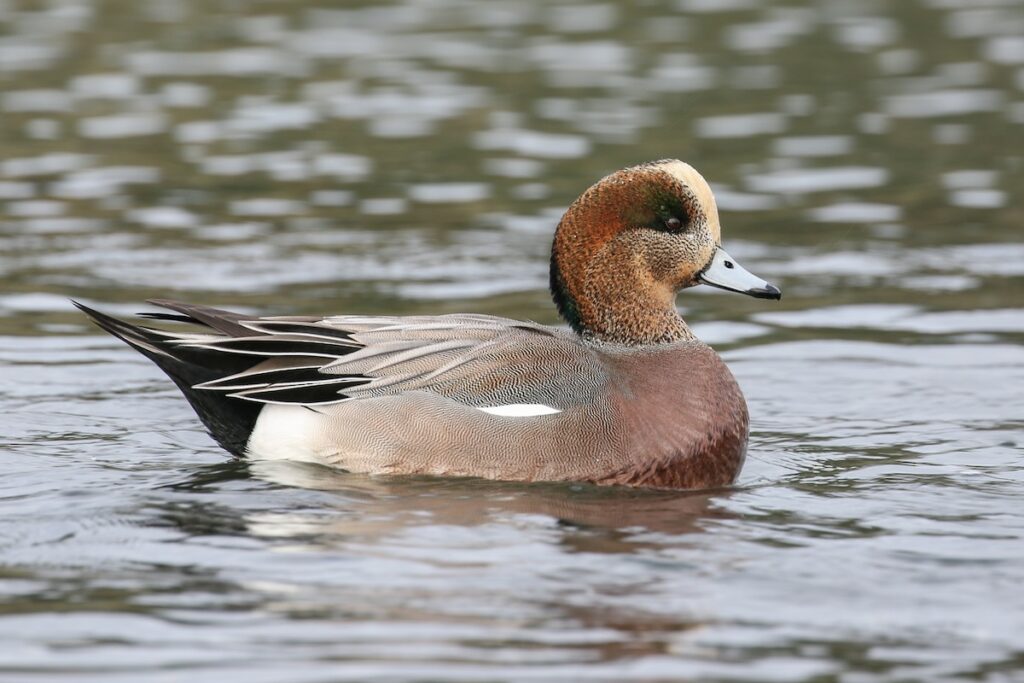 | American Wigeon |
Types of Ducks in Texas
1. Black-Bellied Whistling Duck

The Black-bellied Whistling-Duck seems to be a bright goose-like species with a long, skinny body and a bright pink beak.
Its chestnut body is contrasted with a grey face and a blackish abdomen.
The states of Texas and Louisiana are home to many raucous flocks of these flashy birds.
You may often find them in grasslands and large fields, where they feed on seeds or relax in ponds at nearby golf courses.
They may be easily distinguished from one another because of the high-pitched whistle that this kind of duck produces.
It has a large white spot on its top wings and commonly droops its head when flying.
Black-bellied Whistling-Ducks, previously called tree-ducks (often rest on wooden logs and trees above the water), resemble geese and swans more closely than ducks because of their lack of sexual dimorphism.
This duck is widespread over the southern United States, and its range is steadily growing.
They often hunt during the night.
At dusk, you should keep an eye out for noisy groups of these birds.
These ducks like to sleep in holes and will happily use birdhouses as nesting spots.
2. Muscovy Duck

The Muscovy Duck is among the oldest known domesticated waterfowl species, and it also happens to be one of the most unusual and warty-faced dabblers you’ll ever encounter.
The infamous Muscovy Company is credited for introducing these birds to European countries such as England and France, thus the name.
The ideal time to watch this duck might be from April to November, although locals in Texas claim they see them frequently year-round.
It’s basically a cave-dwelling, forest-dwelling creature.
It has a fairly long bill that curves gracefully upwards toward the crown of its head.
The males of this species of duck are known to mate with females of other duck species, resulting in young that are genetically infertile.
Female Muscovy Ducks are about half the size of males, yet males still account for the biggest duck species in North America.
Wary as they are, these birds sometimes go into shallow marshes.
Domesticated ducks may also be seen in public spaces like gardens and parks, where they flock together to feast on scraps left by visitors.
Wetlands and tree holes are home to this duck species.
It finds food in water bodies, including lagoons, ponds, and marshes.
The Muscovy duck is a popular breed and may be seen often in populous parks and farms.
These ducks have razor-sharp claws and beaks. They spend a great deal of time on treetop perches.
They also visit and settle in artificial nesting boxes of their own will.
3. Mallard Duck

You’ve likely seen a Mallard Duck if you’ve ever spent any time in certain regions of Texas.
It may be found in large numbers in different locations around the world.
This dabbling duck has a broad, yellow beak and a rounded, green head.
It has a brownish face and a blackish back, with grey middle sections in between.
The females have a mottled appearance, and both sexes have a blue speculum patch that is surrounded by a white border.
The tip of its tail is completely out of the water, and it has a large, powerful body.
Most sightings include the animal submerging its head or flipping in the water.
This duck seldom dives and instead consumes amphibians, crustaceans, fish, and a broad variety of vegetation.
Aside from eating grains, Mallards graze while they’re on land.
The Mallard Duck has been highly domesticated and is often seen in urban ponds, where it gathers with other Mallards and several types of dabbling waterfowl.
This duck is at home in both manmade and natural wetlands.
Mallards may be found in marshes, rivers, lakes, along the shore, and even in suburban backyards, making them a popular hunting target.
While they do best in shallow, peaceful environments, you may also locate them in brackish water and salty regions.
4. Fulvous Whistling Duck

The Fulvous Whistling-Duck is a big bird having some peculiar proportions, including a long beak, a long neck, and long legs.
This duck’s overall coloration is a deep fusion of caramel brown and almost black.
It has a thin white stippling solely on a single side of its neck.
The bird has grey legs and beaks and a black tail with a white underside.
In contrast, females may be identified as males through their darker brown color.
All across the United States, but notably within Texas, you may find this species of duck inhabiting warm freshwater marshes.
The Fulvous Whistling-Duck, a globally prolific waterfowl species, may be seen in substantial populations across Texas, particularly in coastal regions.
These birds, which usually appear between the middle of February and the beginning of May, are summertime visitors.
This gangly duck is seldom seen outside rice fields, where it forages for food and finds the optimum water depth.
The Fulvous duck was formerly referred to as a tree duck due to the fact that it frequently roosts in trees.
At night and early in the morning, you can usually hear flocks of these ducks flying over their favorite feeding grounds.
Birds of this species sometimes do deep dives.
They have a loud, falling whistle that they use to call out to others.
Males tend to have a wheezier voice than females while speaking clearly.
5. Blue Winged Teal

The Blue-winged Teal, a species of small dabbling duck, nests mostly in the Panhandle during the mating season but may be found throughout the state.
According to the Texas Nesting Bird Atlas, this duck is among the earliest birds to go south for the winter, arriving in Texas in late August or early September.
This duck gathers in big flocks throughout the month of September.
During the flight, it may be identified from other duck species by a distinctive powder-blue mark on its top wing coverts.
The male Blue-winged Teal is distinguished by his brown upper body and drab speckles on the chest.
A white crescent may be seen at the base of its blue bill.
The females have a more patterned, chilly brown covering their bodies.
These ducks often swim in couples or small groups to draw attention to plants that are submerged.
It’s not uncommon to see them mingling with ducks of other species, too, given how social they are.
Even in the presence of humans, they are easy to identify lingering along the water’s edge of ponds.
However, when they want to eat or rest, they search for a designated area.
The Blue-winged Teal is often seen by ornithologists in quiet bodies of water, such as marshes, ponds, and lakes.
Central to their breeding range is the prairie-pothole region, where they make a living in a grassland environment interspersed with wetlands.
This bird often travels in large groups and may be seen quickly soaring above the clouds.
6. Ruddy Duck

Male Ruddy Ducks are the most easily recognized ducks due to their striking white face, blue beak, and long, stiff tail that is usually held in an upward-cocked position.
The male is well-known for its complex courting rituals, which include pouncing the neck and caressing the chest with the bill.
The result is a murmuring roar and a foamy mass of bubbles.
While some have reported seeing these ducks as early as August, most only see them from October to April.
When compared to other ducks, the Ruddy Duck is tiny.
It creates a somewhat domed crown and wider, shorter necklines.
While in flight, the black undersides of its wings are clearly visible.
This species of duck often dives for food, which it finds among watery invertebrates, particularly midge larvae.
It’s a nocturnal feeder.
This is why you may frequently see the Ruddy Duck sleeping with its head tucked beneath a wing and its tail held straight up.
These ducks are known to nest in wetlands close to water bodies.
You’ll see them most often in the Prairie Potholes.
They congregate in coastal estuaries and coastal rivers and lakes while migrating. Another thing they prefer to do is team up with other ducks, such as the Buffleheads.
7. Wood Duck

The Wood Duck’s iridescent greenish and brown feathers and body make it an exquisitely beautiful bird.
Its plumage is all patterned in unique styles.
The females stand out from the males because of their unique profile and the delicate white markings that surround their eyes.
Their agility is enhanced by the combination of their wide, extended tail and small, crested forehead.
Wooded marshes are home to these ducks, and they use tree holes as nests.
They are very quick to move into receptacles placed near water bodies like ponds and lakes.
They keep their heads high and may even bobble them while in the air.
Wood Ducks may also be found in beaver ponds and along streams because they prefer to congregate in wetlands with dense cattail growth.
The Wood Duck is unique among ducks in having strong claws adapted for gripping and perching on tree bark.
Extreme exploitation by humans for its flesh and plumage, habitat degradation due to overharvesting of wood, and the draining of swamps and wetlands all contributed to the near extinction of this bird in the early 20th century.
In any case, the Migratory Bird Cooperative Act was enacted in 1918, and since then, these waterfowl populations have been steadily increasing.
The Wood Duck spends most of the year across Texas but moves south when winter comes.
During the months of mid-February to mid-September, it breeds.
This bird swims with the same jerky head movement of a walking pigeon.
These cheerful animals typically congregate in small groups.
8. Redhead Mallard
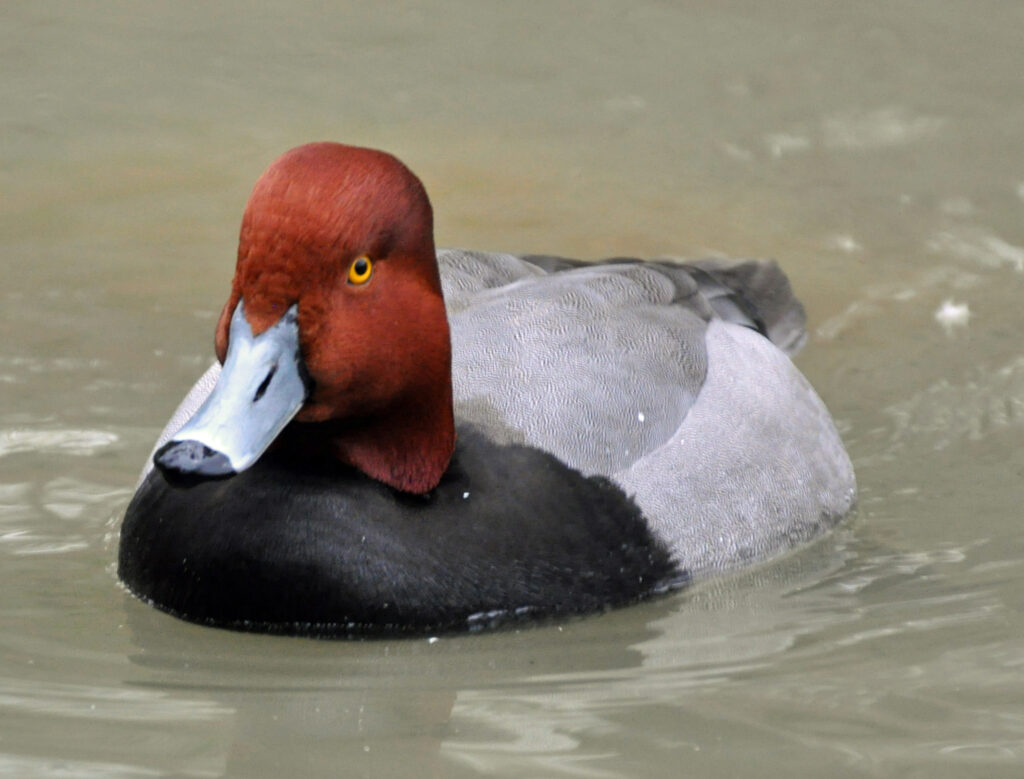
The Redhead Mallard’s name comes from the striking contrast between its grey body and its cinnamon-colored neck and face.
The females of this species have uniformly brown, unremarkable bodies.
Only one nest of this duck was known in Texas prior to 1974, according to the Texas Nesting Bird Atlas.
According to historical records, these ducks have been a regular sight in the state beginning in early September.
This species of duck congregates in spectacular numbers, illuminating shorelines and waterways.
They are quite communal, gathering together in large groups to molt and migrate, particularly in areas near the Gulf of Mexico.
Their numbers swell into the thousands throughout the winter months.
Their summer homes are in western lakes with dense reed growth.
The Readhead Mallard is easy to see since it travels in big flocks and mixes freely with other duck species, including the scaup, wigeon, Canvasbacks, and American coot.
These ducks usually forage by diving for food. In contrast to other diving ducks, however, these birds prefer to swim in rather shallow waters.
Their tippling-up eating method is comparable to that of the dabbling duck.
For their extreme sociability, redhead mallards are commonly referred to as “rafting ducks.”
9. Gadwall

The Gadwall, in comparison to a Mallard Duck, is around the same size.
Its massive, square head is offset by a very slimmer bill.
When in flight, the bird’s wings and neck give the impression of greater slenderness.
The males have a drab brown color with a black tip on their tails.
Women are buff in color and have a brownish pattern on their skin.
Their bills have little orange stripes around the rim.
It is common to see a flock of gadwalls feeding together with a variety of dabbling ducks.
They frequently search for food among submerged foliage by leaning forward and seldom diving.
It’s well knowing that these ducks will raid the food supplies of neighboring flocks.
During the winter, you’re more likely to see these birds in pairs.
They deliberately choose potential partners months before mating season.
10. American Wigeon

The American Wigeon, unlike other ducks, is small and has a rounded head and short beak.
Its natural state is to lie on the edge of the water with its head tucked under.
Its no-neck attractiveness comes from this feature.
All over, a mating male’s body is a mild cinnamon color, although there are white stripes on the sides.
The majority of their head is a drab brownish-grey.
It has a green slash across its face, just behind its eyes.
The female American wigeon possesses a warm brown plumage and a distinctive smudge around her eyes.
Typically, flocks of these ducks may be seen residing in or near bodies of water.
They graze on the surface vegetation of the ocean floor nearby.
They waddle around fields, plucking plants to eat with their small bills.
The American wigeon is very noisy, which sets it apart from a lot of other bird species.
Check out this article on Types of Ducks in Minnesota.
Conclusion
In conclusion, Texas is home to a wide variety of ducks, each with their own unique characteristics and behaviors.
From the colorful Wood Duck to the migratory Fulvous Whistling Duck, these birds are a true delight to observe in their natural habitat.
Whether you’re a waterfowl hunter, birdwatcher, or just someone who appreciates the beauty of nature, Texas has plenty to offer in terms of duck diversity.
By understanding the distinguishing features of each species and their preferred habitats, you can enhance your birding experience and appreciate the incredible diversity of Texas’s waterfowl inhabitants.
So, grab your binoculars and head out to the wetlands and lakes of Texas to discover these remarkable ducks for yourself!
FAQ
When is the best time to see ducks in Texas?
The best time to see ducks in Texas is during the fall and winter months, from October through February. This is when many species of ducks migrate south to Texas from their breeding grounds in the northern United States and Canada.
Where can I find ducks in Texas?
Ducks can be found in a variety of habitats in Texas, including wetlands, lakes, ponds, rivers, and coastal areas. Some of the best places to look for them include state and national parks, wildlife refuges, and birding hotspots.
What is the difference between dabbling ducks and diving ducks?
Dabbling ducks are also known as puddle ducks and typically feed on the surface of the water by “dabbling” or tipping their heads underwater to reach vegetation. Diving ducks, on the other hand, are better adapted for diving and swimming underwater to catch fish and other prey.
How can I identify different types of ducks?
Ducks can be identified by their size, shape, plumage, and behavior. Using a field guide or a birding app can also be helpful in identifying ducks. It’s important to note that some species of ducks can look similar, so it’s important to pay close attention to their distinguishing features.
Can I hunt ducks in Texas?
Yes, duck hunting is a popular sport in Texas. However, it’s important to follow state and federal regulations regarding hunting seasons, bag limits, and licensing requirements. Additionally, it’s important to practice safe and ethical hunting practices and respect the natural habitats of the ducks.
Last Updated on May 13, 2023 by Lily Aldrin
